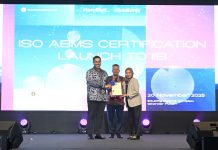Aligning with Shifting Global Trends
The US-Sino trade tensions and post-COVID-19 pandemic are likely to be ongoing themes in the years ahead that will prompt a rethink of supply chains and shape investment trends. This presents a new milestone for Malaysia’s trade sector as both private and public firms re-strategise business models to capitalise on these opportunities. Emerging trends include:
Regionalisation, localisation and nearshoring will further decelerate globalisation. Nearshoring offers more advantages such as just-in-time inventory control due to shorter cargo time, a more resilient supply chain, and lesser discrepancy in trade deals. Small economies located near large markets like China and Europe will likely benefit from the rise of regionalisation and nearshoring. Meanwhile, some countries would promote localisation or restoration, particularly for critical items.
The COVID-19 pandemic accelerates digitalisation
The adoption of artificial intelligence or automation could displace manual/labour-intensive processes and drive productivity even with strict SOPs in place. Digital trade would expedite customs clearance procedures and reduce port congestions, while a change in consumer favouritism towards e-commerce to avoid physical contact would reinforce investments in digital technologies to timely cater to fluctuating demand. The flexibility of work-from-home arrangement, online education, and virtual meetings or conferences is expected to continue post-pandemic. The acceleration in digital transformation is fuelling strong, durable demand for semiconductor equipment, whereby Malaysia’s exports of E&E products posted persistent gains even during the pandemic year (RM69.3bn or +25.8% in 2018-19; RM25.1bn or +7.4% in 2020).
Prioritising health and safety measures
Post-pandemic, there is likely to be ongoing demand for critical medical supplies, devices, and equipment such as vaccines and personal protective equipment (PPE), as well as other essential pharmaceutical products. There will also be pent-up demand for other types of medical treatment post-pandemic, underpinning the orders of other generic drugs. Malaysia’s rubber products (RM2.5bn or +9.0% in 2018-19; RM17.0bn or +56.8% in 2020) and optical & scientific equipment exports (RM9.5bn or +28.5% in 2018-19; RM4.9bn or +11.5% in 2020) recorded higher exports to major trading partners (e.g. US, EU, and China) over the past three years. Exports of Malaysia’s chemicals & chemical products including pharmaceuticals held at a pre-trade tension level of around RM48bn in 2020, despite the global recession last year.
Rise of green consumerism
Awareness of climate change effects and the Environment, Social, and Governance (ESG) theme will be further strengthened. There is likely to be a higher demand for green and less polluting products, curbing demand for fossil fuels and non-biodegradable output such as plastics. Malaysia’s exports of mineral fuels especially petroleum were significantly lowered last year (2020: -RM39.4bn or -26.2% from an average of RM150.5bn in 2018-19) in spite of the adverse impact of falling crude oil prices and compliance to output cuts agreed by OPEC+ countries. Meanwhile, Malaysia’s exports of plastics and articles (2018-19: +RM8.5bn or +28.0%; 2020: -RM4.5bn or -11.5%) were largely due to increased demand from China since 2018, relative to stable orders from other major countries.
Trade Gains insight provided by Julia Goh & Loke Siew Ting, Senior Economist & Economist, UOB Bank julia.gohml@uob.com.my / jasrine.lokeST@uob.com.my




